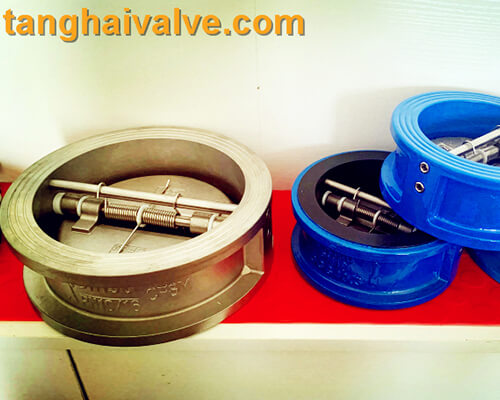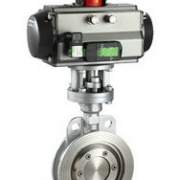Description of valve pressure& installation direction requirements
As the name implies, the pressure of the valve refers to the pressure that the valve can withstand, that is, the

double-wing-check-valve-3
pressure level of the valve is not lower than the design pressure level of the pipeline. The pressure-bearing direction refers to the closed state of the valve after the valve is applied to the pipeline conditions. The arrow direction of the valve body is the recommended pressure-bearing direction. If it is installed incorrectly, the leakage failure of the valve may not be tightly closed. Generally, it is determined according to the use process or usage conditions. The same direction refers to the pressure-bearing direction (the side with high medium pressure on both sides of the valve gate) and the flow direction, and the opposite direction refers to the pressure-bearing direction (both sides of the valve gate) The side with high medium pressure) is opposite to the flow direction of the medium.
Many valves are directional, such as stop valves, throttle valves, pressure reducing valves, check valves, etc. If they are installed upside down, they will affect the use effect and life (such as throttle valves), or they will not work at all (such as Pressure reducing valve), or even cause danger (such as check valve). Normal valves have direction signs on the valve body; if not, they should be correctly identified according to the working principle of the valve.
The arrow marked on the valve body is the recommended pressure direction of the valve, not the flow direction of the pipeline medium. Valves with two-way sealing function may not be marked with an indicating arrow, or with an arrow, because the valve arrow refers to the recommended pressure direction. It is better to have one direction in the left and right or up and down directions. Usually used by the engineering installation company as the medium flow direction to mark the wrong installation, resulting in leakage or even pipeline accidents;
The valve cavity of the shut-off valve is asymmetrical left and right. The fluid must pass through the valve port from bottom to top, so that the fluid resistance is small (determined by the shape), and the opening is labor-saving (because the medium pressure is upward), and the medium does not press the packing after closing, which is convenient for maintenance . This is the reason why the globe valve cannot be reversed. Other valves also have their own characteristics. The location of the valve installation must be convenient for operation; even if the installation is temporarily difficult, it is necessary to consider the long-term work of the operator. It is best to keep the valve handwheel flush with the chest (usually 1.2 meters away from the operating floor), so that it is easier to open and close the valve. The hand wheel of the floor valve should be upward, not tilted, to avoid awkward operation. To
The valve of the wall machine and the equipment should also leave room for the operator to stand. It is necessary to avoid operating from the sky, especially acid and alkali, toxic media, etc., otherwise it is very unsafe. Do not install the gate valve upside down (that is, the handwheel is downward), otherwise the medium will remain in the valve cover space for a long time, which will easily corrode the valve stem, and it is contraindicated by certain process requirements. At the same time, it is extremely inconvenient to replace the packing. The exposed stem gate valve should not be installed underground, otherwise the exposed stem will be corroded due to moisture. When installing the lift check valve, ensure that its valve flap is vertical for flexible lifting. For the swing check valve, ensure that its pin shaft is level during installation to allow flexible swing. The pressure reducing valve should be installed upright on a horizontal pipe, and not inclined in all directions.
TH Valve is a professional manufacturer of butterfly valve, gate valve, check valve, globe valve, knife gate valve, ball valve with API, JIS, DIN standard, used in Oil, Gas, Marine industry, Water supply and drainage, fire fighting, shipbuilding, water treatment and other systems, with Nominal Diameter of DN50 to DN1200, NBR/EPDM/VITON, Certificates & Approvals: DNV-GL, Lloyds, DNV, BV, API, ABS, CCS. Standards: EN 593, API609, API6D
Related news /knowledge:
Working principle diagram of swing check valve;
Installation instructions of double eccentric butterfly valve;
Butterfly valve use principle and installation instructions;
Butterfly valve and its Development history – (1)

 tanghaivalve.com
tanghaivalve.com 

 © Copyright 2020 Tianjin Tanghaidongyang Valve Co., Ltd. All Rights Reserved.
© Copyright 2020 Tianjin Tanghaidongyang Valve Co., Ltd. All Rights Reserved.